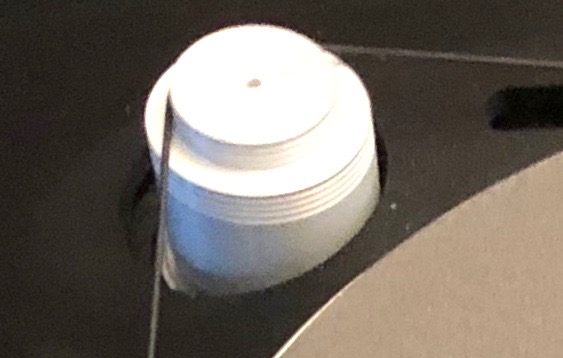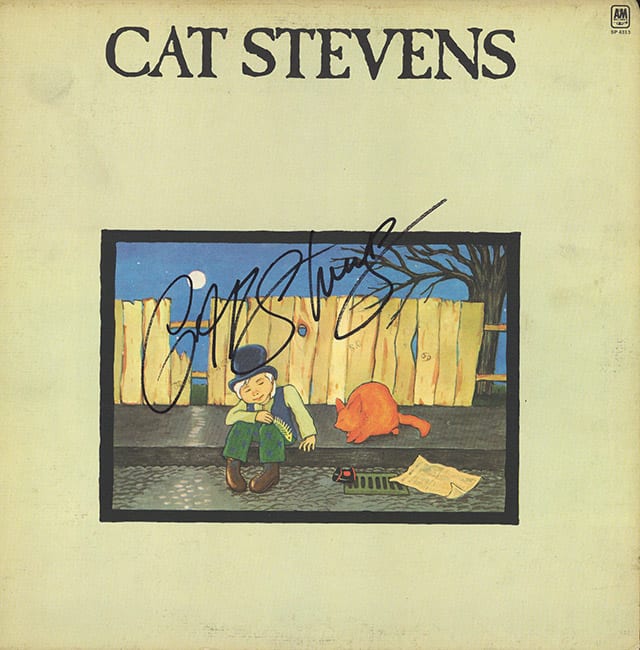
The Margules family has been in the electronics and radio business since 1927, and Julian Margules, the founder of Margules Group, has been developing and manufacturing audio equipment for over 40 years. He is well known in many parts of the world and is becoming well known in the United States. I first heard of Margules Group in 2010, but the first time I heard one of their products was at one of the early California Audio Shows. Margules Group is located in Mexico City, and its products are designed and manufactured there. The Magenta line is fully engineered and manufactured by Margules Group, and it includes other products, such as the FZ47db phono stage.
Julian is the patriarch of the family which now includes four generations working in the company and responsible for its growth. Julian is a true gentleman and one of the good guys in the high-end audio world. He is a lecturer at a number of universities giving Margules Group access to some of Mexico’s brightest young engineers. I say all this to let you know that this is a serious high-end audio company.

There is one more thing I would like to point out about Margules Group before I get on with reviewing their turntable. For the last few years at the few audio shows where they have shown in the US, they have had systems where everything was made by Margules Group. For the last couple of years at the shows they have attended, many have mentioned them for the best sound at the show. In fact, I gave them an award for last year’s California Audio Show as the best system under $50,000. You can read more about that system, which is pictured above here. So, don’t let the low price of this turntable, which was used at those shows, keep you from thinking that it isn’t a serious turntable.
Description
The turntable above is the one I reviewed and the one that was at the California Audio Show this past year. The first prototype of this turntable that I saw had a ruby red plinth, but whether red or black, the table is very elegant with its simple bowed polycarbonate top plate (it has the appearance of brushed aluminum but avoids the associated resonance of thin aluminum). The motor is decoupled from its platter as seen in the picture below.

The Magenta TT-10 has a machined high-mass platter (from a single block of aluminum) sitting in a ball bearing bushing. The platter is driven by a synchronous low noise, low RPM and low torque motor. It is suspended in a spring mounting to avoid noise induction to the turntable. The motor pivot is also ball bearing.
The TT-10 has three contact or resting points: two inverted conical isolation feet, height adjustable for leveling, and the isolated motor assembly to transfer energy away from the turntable.
The arm mounting is universal, and you can easily adjust it for vertical tracking angle and azimuth. The Magenta TT-10 comes with the UP-01 uni-pivot tonearm. The 9.5-inch tonearm is made of anodized machined aluminum. The tonearm also has internal antiresonance rings. The UP-01 allows for easy and precise adjustment of overhang, azimuth, anti-skating, and tracking weight. All of this results in a table that has dead-on speed accuracy, quiet background and an arm that tracks beautifully.
Spinning Tunes
The whole purpose of a turntable system is to spin records and turn them into music. The TT-10 performed this task with grace and best of all PRaT (Pace, Rhythm and Timing).
Pairing this table with the Hana ML Low Output moving coil cartridge was a really great sounding match. The sound was open and dynamic with a beautiful level of detail. The sense of presence and immediacy in this vinyl playback system impressed me.

I love Joni Mitchell’s album Blue, and when listening to it with the TT-10 and the Hana ML, the album provided a real emotional experience. Joni’s voice came through with plenty of tone and breath resulting in an overall lovely sound. Best of all the music had plenty of spirit and a great beat.

For a male vocal, I’ve been listening to Cat Stevens since college. So, I put on Teaser and the Firecat with cuts like “Tuesday is Dead,” “Morning Has Broken” and “Peace Train” all came through with beautiful guitar playing and great tone. His voice had that raspy richness it should have without any sibilance.

I also listened to Raising Sand by Alison Krauss and Robert Plant. Much of this LP has a rather grungy sound. It’s rare that any source much less one at this price point has enough low-level detail to give even a hint of the vocal characteristics and interplay on this recording. However, this combo was able to consistently do so.
Conclusion
I should remind you that in all of the great-sounding show systems Margules Group has presented over the last few years, the Magenta TT-10 has been the source. This table and arm produce a highly musical sound, like all of the Margules Group gear I have reviewed and listened to!
Specifications
Belt driven, 33 & 45 RPM
- Uni-pivot tonearm included (can be changed by end-user)
- Interchangeable Arm mini-din connector
- Fully adjustable VTA, azimuth, tracking force
- High mass, 5kg (11 lb.) solid aluminum platter
- RCA output connectors
- Rigid, low resonance frame
- Extremely low friction spindle assembly; ball-bearing spindle
- Motor Type: AC smooth low speed 24-pole synchronous motor.
- Synchronous motor, 250 RPM, very low RPM and torque, very low friction bearing
- Wow and flutter < 0.15%
- Dimensions (height, width, depth): 6” x 21″ x 16” (15cm x 52 cm x 41cm)
- Total Weight: 8 Kg
- Included accessories:
1 cork/rubber compound platter mat, 1 digital scale for tracking force, 1 custom protractor for the correct overhang and VTA and azimuth settings, 2 spare belts, 1 stainless steel Magenta Turntable Resonance Control (TRC – list price $400) - Limited Manufacturers Warranty on Parts & Labor: 5 (five) years from the original purchase date
MSRP: $3,000


You should have used more challenging music